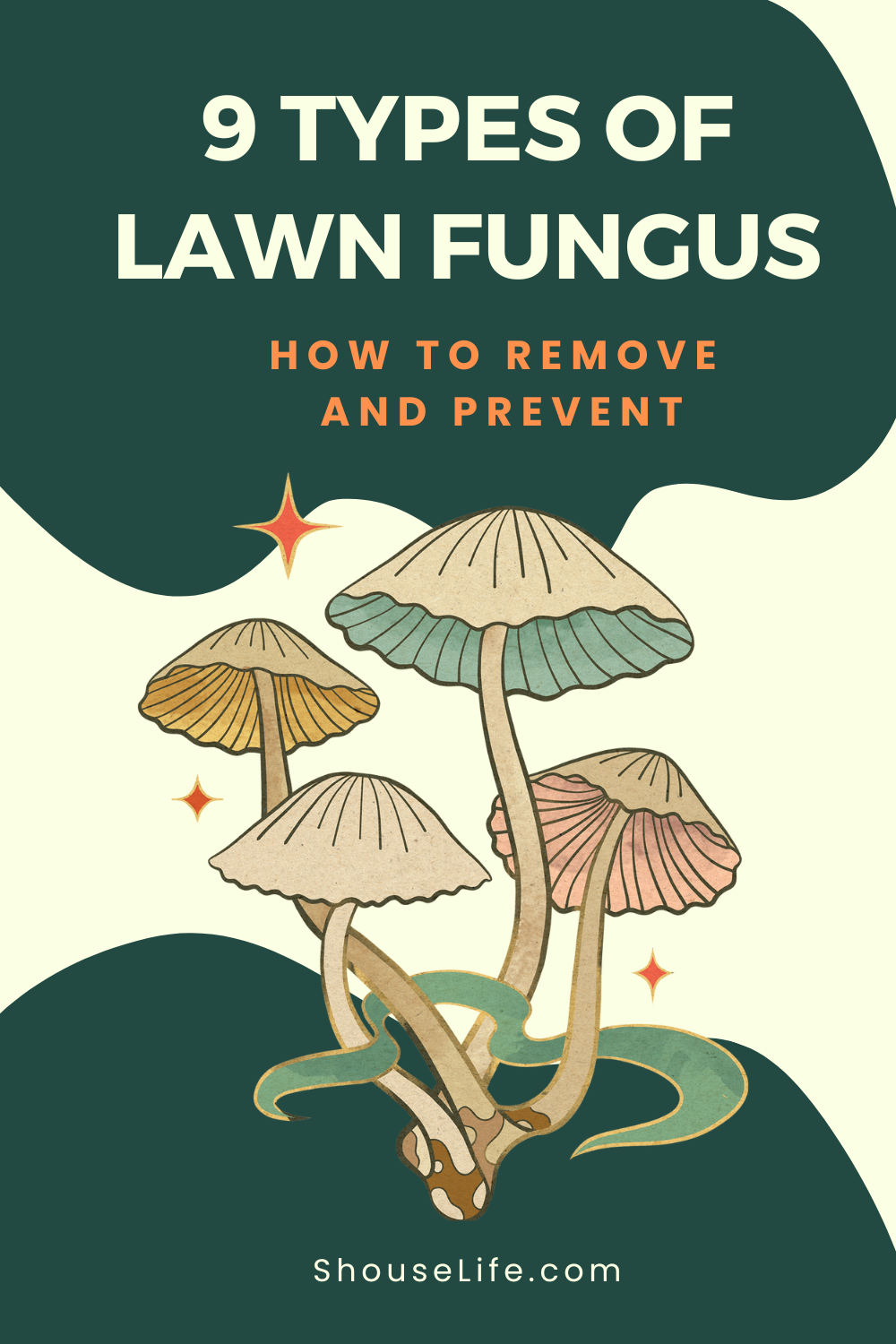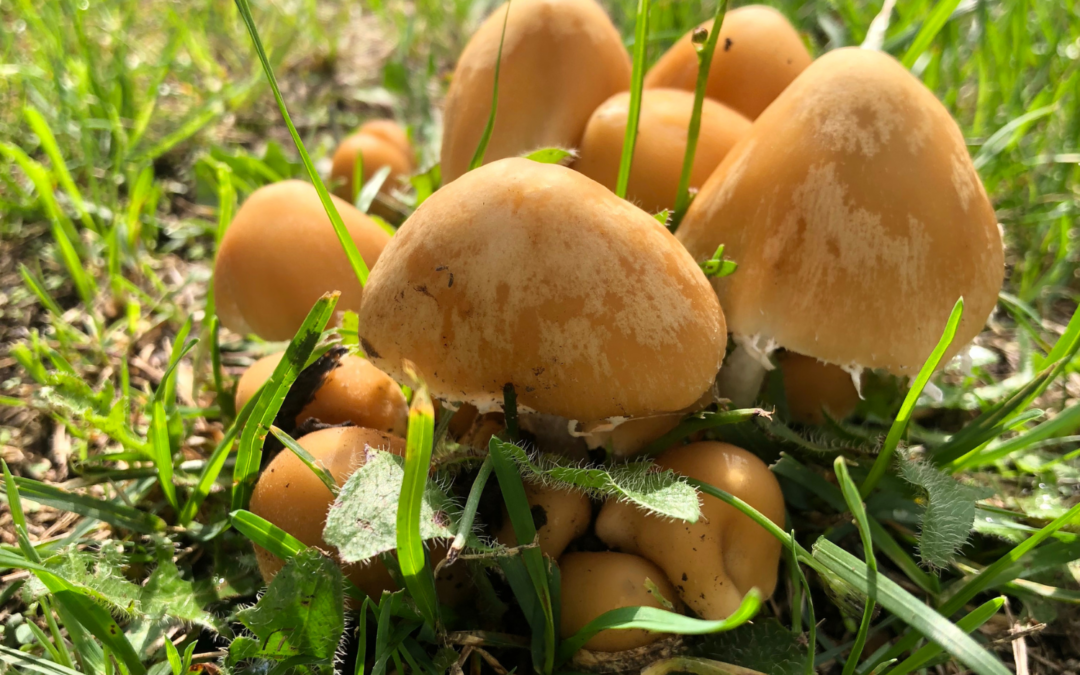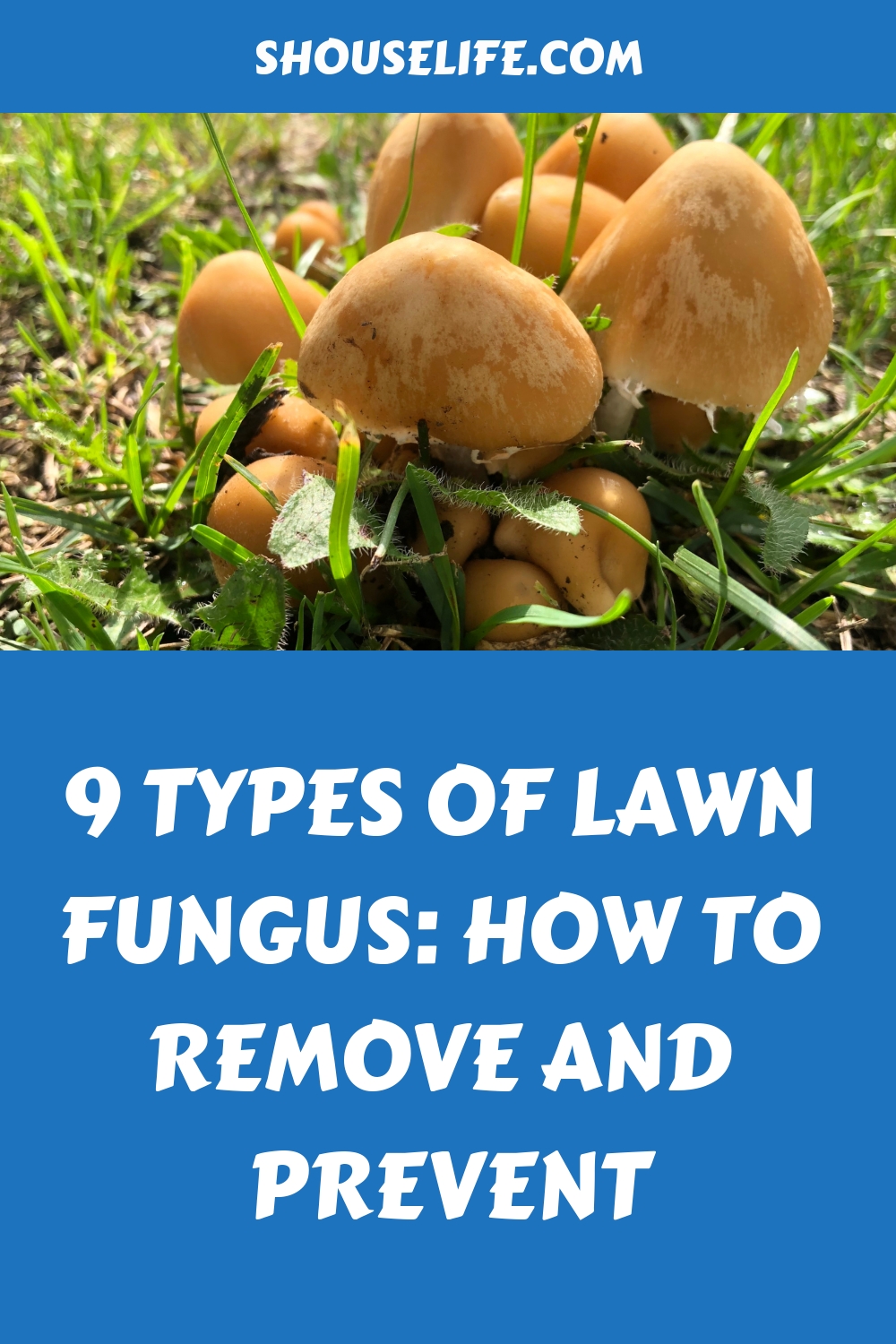Lawn fungus can cause many diseases that can destroy the appearance of your lawn. There are many different types of lawn fungus, each with its own set of symptoms and treatment options. By being aware of the different types of fungus that can affect your lawn, you can take steps to prevent it from happening in the first place. And if you do find yourself dealing with lawn fungus, there are steps you can take to get rid of it and enjoy a healthy lawn once again.
Contents
9 Types of Lawn Fungus
First, let’s diagnose what type of lawn fungus there are and which you may possibly have. Here is a list of the various types of lawn fungus.
1. Fairy Ring
Fairy ring is one of the first diseases caused by a lawn fungus. This disease causes rings of dead and dark green grass to form on your lawn. In severe cases, brown mushrooms will also appear all over. The lawn fungus that causes fairy ring feeds on dead vegetation that resides beneath the surface of the grass. This dead vegetation includes old thatch and tree stumps.
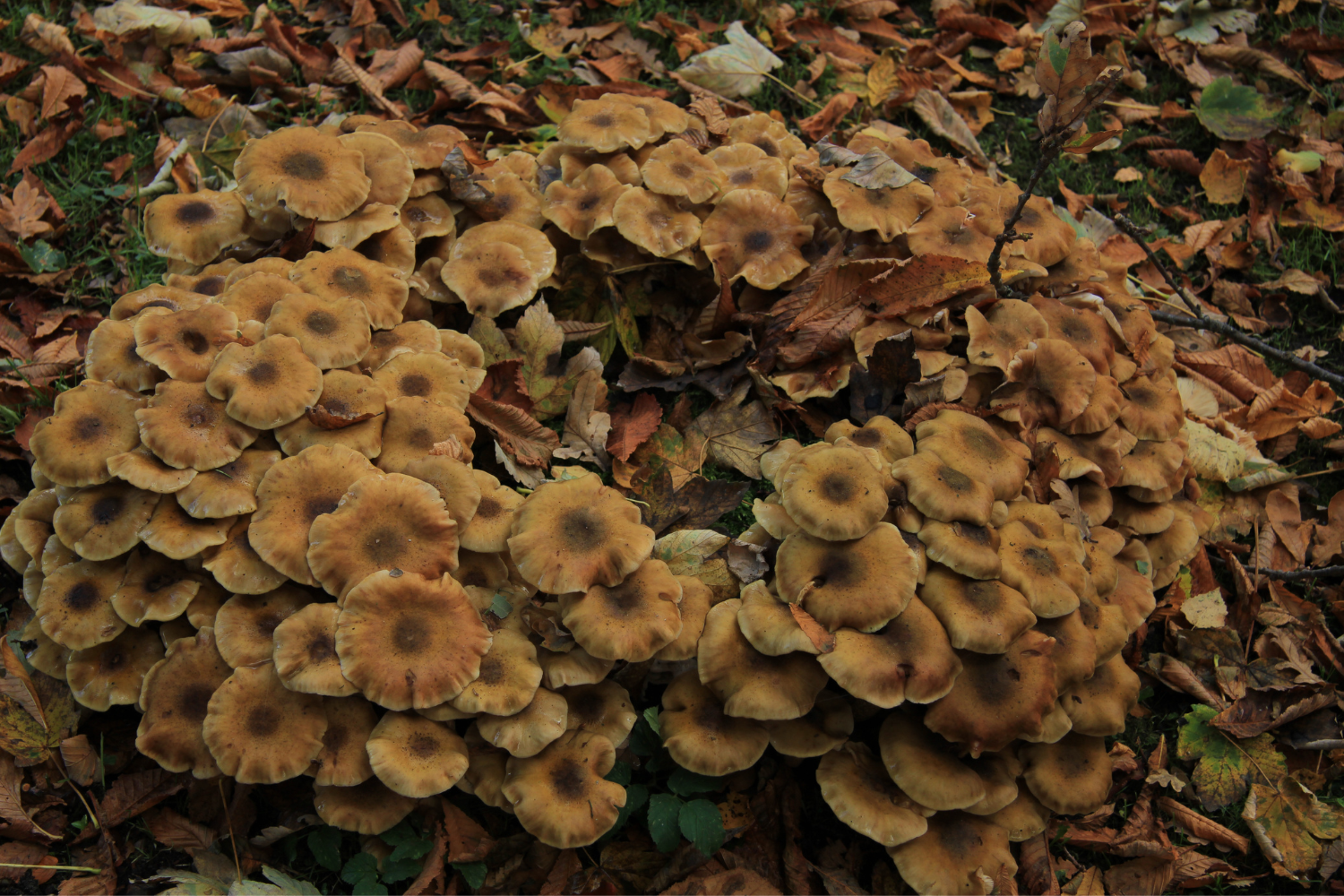
fairy ring lawn fungus
Fairy ring is a type of lawn fungus that can cause circular patches of mushrooms to appear in your lawn. Fairy ring typically starts as a small circle of mushrooms, but over time it can spread and grow to be up to 15 feet in diameter! If you have fairy ring in your lawn, you’ll need to treat it with a fungicide to get rid of it.
2. Dollar Spot
One of the next diseases caused by a lawn fungus is dollar spot. This disease causes small, round spots to form on your lawn. Only a few spots appear at first, but over the course of a few weeks, they will multiply to much larger numbers. The lawn fungus that causes dollar spot is usually caused by lawns that are low in nitrogen or those that are not fertilized well enough.
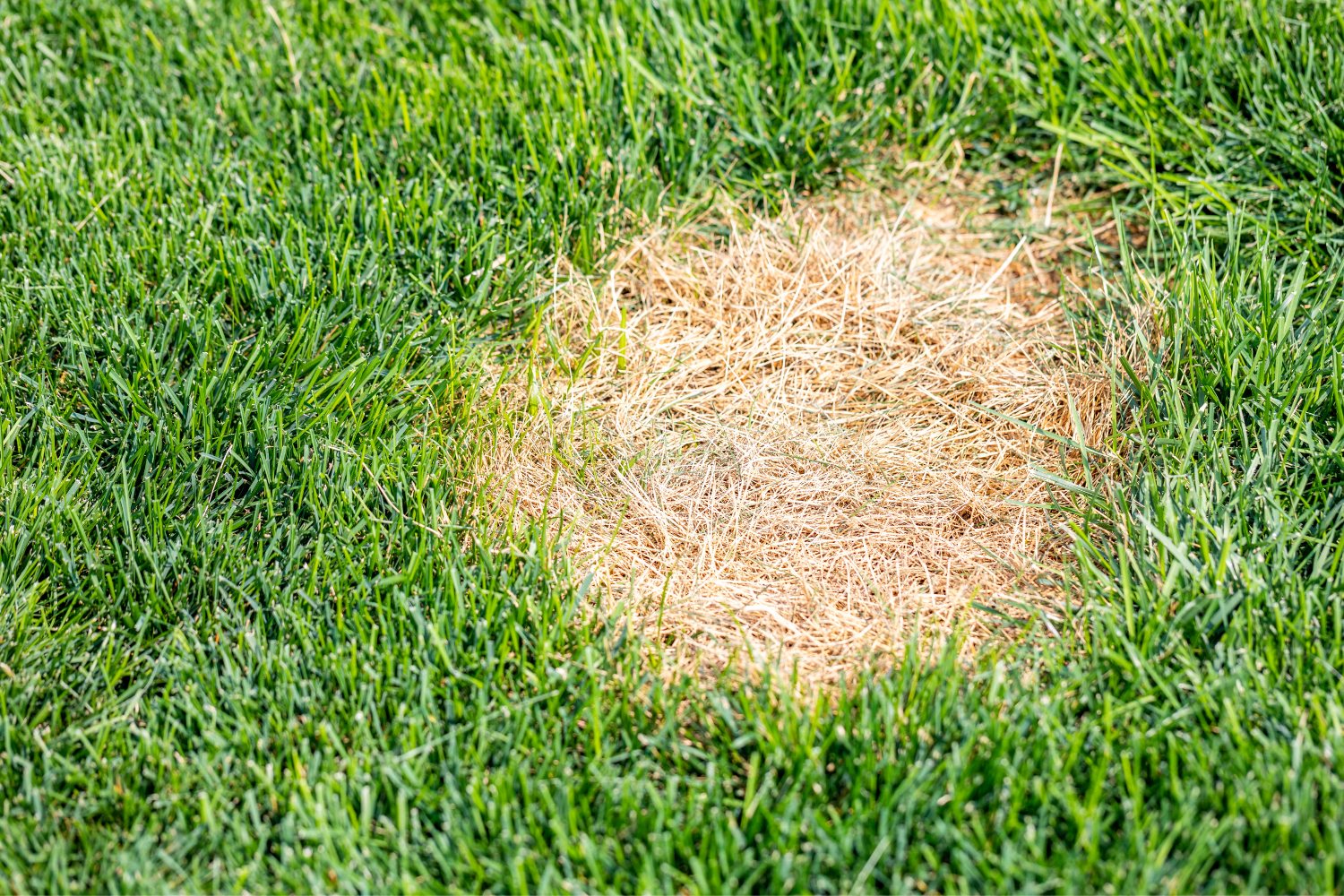
dollar spot lawn fungus
Dollar spot is a type of lawn fungus that can cause small, silver-dollar sized spots to form on your lawn. Dollar spot is often caused by too little nitrogen in the soil. If you think you have dollar spot in your lawn, take a sample of your lawn to a professional for testing. Once you know you have dollar spot, you can treat it with a fungicide or lawn care product designed specifically for this type of fungus.
3. Snow Mold
Snow mold is a disease that appears when your lawn is covered with a lot of snow. The disease will cause patches of brown and yellow grass to form all over the yard. After heavy rainfall, a white or pink fungus will also appear on the lawn. You can help prevent this lawn fungus from destroying your grass by keeping the grass mowed. Also, you should never apply nitrogen in the late fall as this will likely cause snow mold.
Snow mold is a type of lawn fungus that can cause small, gray, or white patches to form on your lawn. Snow mold is often caused by too much moisture in the soil. If you think you have snow mold in your lawn, take a sample of your lawn to a professional for testing. Once you know you have snow mold, you can treat it with a fungicide or lawn care product designed specifically for this type of fungus
4. Brown Patch
Brown patch is also a disease caused by a lawn fungus. Brown patch causes your grass to have a sickly appearance very quickly. The grass will try brown and dry up in just a few days. This lawn fungus favors yards that have too much nitrogen or those that are overly fertilized.
Brown patch is a type of lawn fungus that can cause large, brown patches to form in your lawn. Brown patch is often caused by too much moisture in the soil. If you think you have brown patch in your lawn, take a sample of your lawn to a professional for testing. Once you know you have brown patch, you can treat it with a fungicide or lawn care product designed specifically for this type of fungus.
5. Slime Mold
One of the last diseases caused by a lawn fungus is slime mold. The main symptom of this disease is a yellow or gray mold that clings to the top of the grass. This lawn fungus normally appears in yards that have been exposed to wet conditions for prolonged periods of time. Mowing and raking will only serve to spread the disease to other areas of the yard.
These are some of the common diseases caused by lawn fungus. You can avoid most of them by keeping your grass mowed and fertilized well. Grass that isn’t maintained well is a prime target for lawn fungus.
6. Yellow Patch
Yellow patch is another type of lawn fungus that can cause large, yellow patches to form in your lawn. Yellow patch is often caused by over-fertilizing your lawn, so be sure to use fertilizer sparingly. If you suspect you have yellow patch, have your lawn tested by a professional to confirm the diagnosis. Once you know you have yellow patch, you can treat it with a fungicide or lawn care product designed specifically for this type of fungus.
7. Red Thread
Red thread is a type of lawn fungus that can cause red or pink patches to form on your lawn. Red thread is often caused by too much nitrogen in the soil. If you think you have red thread in your lawn, take a sample of your lawn to a professional for testing. Once you know you have red thread, you can treat it with a fungicide or lawn care product designed specifically for this type of fungus.
8. Pythium Blight
Pythium blight is a type of lawn fungus that can cause large, brown patches to form on your lawn. Pythium blight is often caused by too much moisture in the soil. If you think you have Pythium blight in your lawn, take a sample of your lawn to a professional for testing. Once you know you have Pythium blight, you can treat it with a fungicide or lawn care product designed specifically for this type of fungus.
9. Rust
Rust is a type of lawn fungus that can cause small, orange-colored spots to form on your lawn. Rust is often caused by too little nitrogen in the soil. If you think you have rust in your lawn, take a sample of your lawn to a professional for testing. Once you know you have rust, you can treat it with a fungicide or lawn care product designed specifically for this type of fungus.
Treating Lawn Fungus
Once you’ve identified the type of lawn fungus you’re dealing with, you can treat it accordingly. For most types of lawn fungus, you’ll need to use a fungicide or lawn care product designed specifically for that type of fungus. Be sure to follow the directions on the label carefully. You may need to apply the product more than once to get rid of the fungus completely. In some cases, you may also need to aerate and reseed your lawn to help it recover from the damage caused by the fungus.
Preventing Lawn Fungus
The best way to deal with lawn fungus is to prevent it from happening in the first place. To do this, you’ll need to create and maintain a healthy lawn. Be sure to mow your lawn regularly and keep it well-watered. You should also fertilize your lawn according to the manufacturer’s directions. If you live in an area with a lot of moisture, consider using a lawn care product that contains fungicide to help prevent lawn fungus from taking hold.
Lawn Fungus Conclusion
Lawn fungus can be a nuisance, but by taking some preventative steps and knowing how to identify and treat different types of lawn fungus, you can keep your lawn healthy and looking great.
Resources
- How to Identify and Treat Grass Fungus
- Lawn Disease & Fungus Control: How to Get Rid of Lawn Diseases
- Is fungus or mold growing in your lawn? Here’s how to stop it
